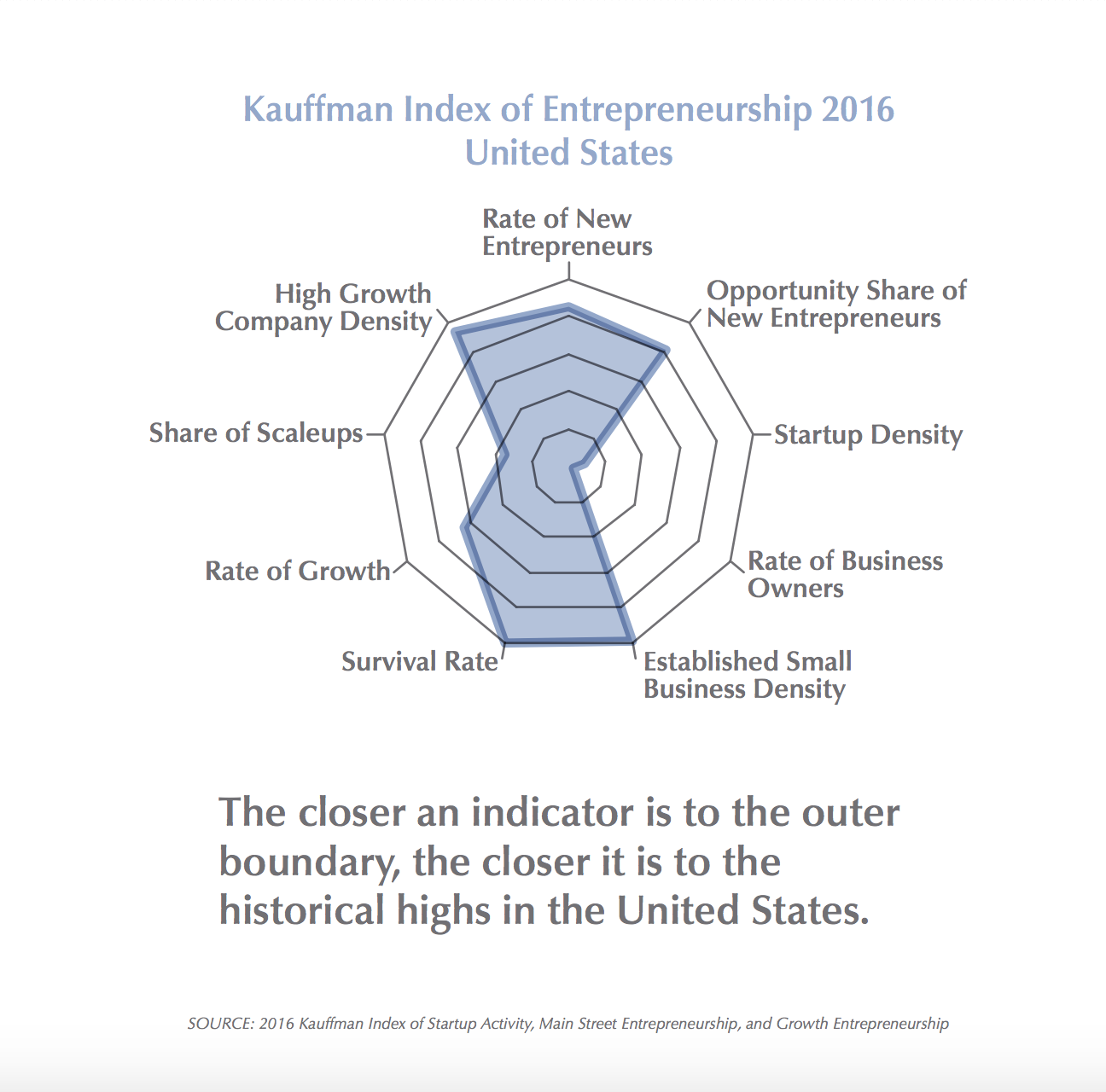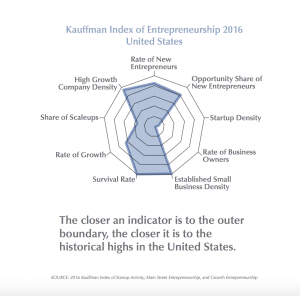
Kauffman Report and the Southern Tier: Part I
Earlier this year, the Kauffman Foundation released the 8th annual State of Entrepreneurship report, titled “Zero Barriers: Three Mega Trends Shaping the Future of Entrepreneurship.”[1]
The report finds that there is a resurgence of entrepreneurship in the US after the Great Recession. Indicators related to new firm creation, local small businesses, and growth companies are improving. Overall entrepreneurial indicators such as job creation and optimism are also increasing.
As shown in the graph, some indicators are either at or close to historical highs. These include survival rate, established small business density, high growth company density, rate of new entrepreneurs, and opportunity share of new entrepreneurs.


In addition, the report identifies some changes to the entrepreneurial landscape that will bring new challenges. These trends in changing demographics, increased activity in mid-sized metro areas, and lower rates of job creation will shape the future of entrepreneurship in the US. The application of these to the Southern Tier region is explored in this two-part blog series.
Demographics of entrepreneurship are not in keeping with the US average.
The report finds that while the US is becoming more racially diverse, diversity among entrepreneurs remains low. Minority groups continue to face systemic barriers, which presents both challenges and opportunities. The lack of diversity is exacerbated due to minority business owners being unable to receive funding, leaving major gaps in the market.
Women are less likely than men to start new businesses; only 40 percent of new entrepreneurs in 2015 were female. It is also harder for them to stay in business. Of the small businesses under five-years old, only 33% are women owned. The Southern Tier is slightly below the US average, with 32% of businesses being women-owned. STSA partner incubator Rev: Ithaca Startup Works recognized a gender imbalance in both membership and event attendance soon after opening. Rev then took a different strategy, hosting an event showcasing female entrepreneurs in the Southern Tier. The event resonated with residents and became the first sold-out event hosted by the incubator. Taking advantage of this momentum, Rev launched the Passenger to Pilot Women Entrepreneurship program. Since launching two years ago, 16 female entrepreneurs have participated in the program. Their presence is helping to build a strong network of female entrepreneurs, mentors and role models within the community.
It is also important to keep in mind the aging US population. 30% of US adults will be past retirement age by 2050, compared with 19% today, which will affect the pipeline of entrepreneurs. This is especially true for the Southern Tier region where the aging population is linked to the slowdown of economic activity. Both manufacturing and agriculture, historically two of the largest industries in the Southern Tier, are characterized by an aging workforce across the US.
The Rev Hardware Accelerator and the STSA Hardware Entrepreneurship Ecosystem program are designed to mitigate this decline and support young entrepreneurs in bringing their ideas from “napkin to reality.” The Rev Hardware Accelerator is unique in that it starts early in the process of product development, setting it apart from most hardware entrepreneurship programs in the US. These programs combine the Southern Tier’s assets in engineering, materials science, and manufacturing with cutting-edge business incubation, acceleration and entrepreneurship theory. Together, they strengthen the economy and employment by quickening the development of product-oriented .
[1] Source: http://www.kauffman.org/what-we-do/resources/state-of-entrepreneurship-addresses/2017-state-of-entrepreneurship-address
